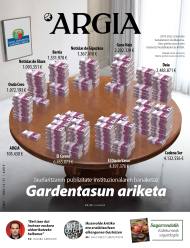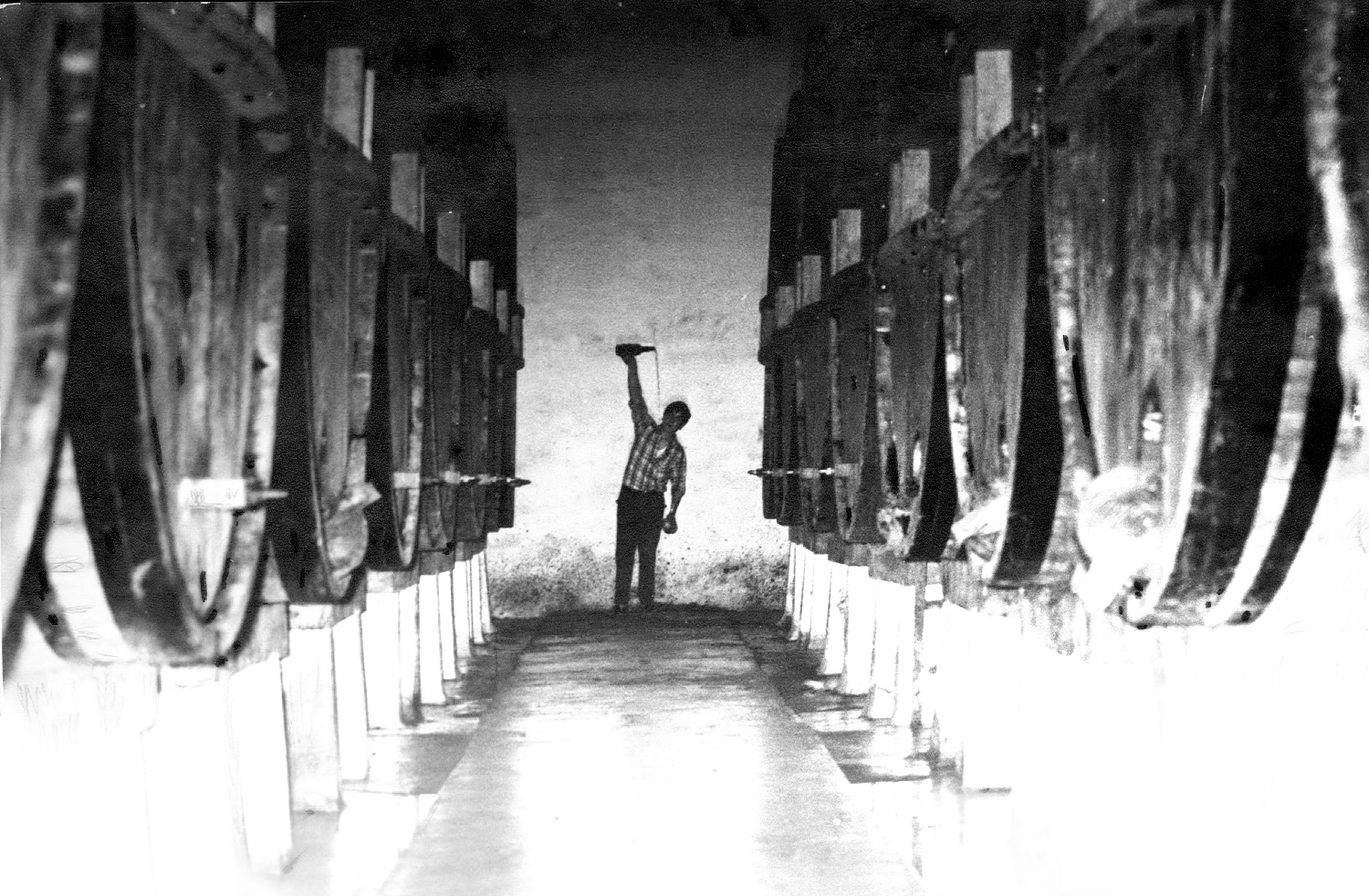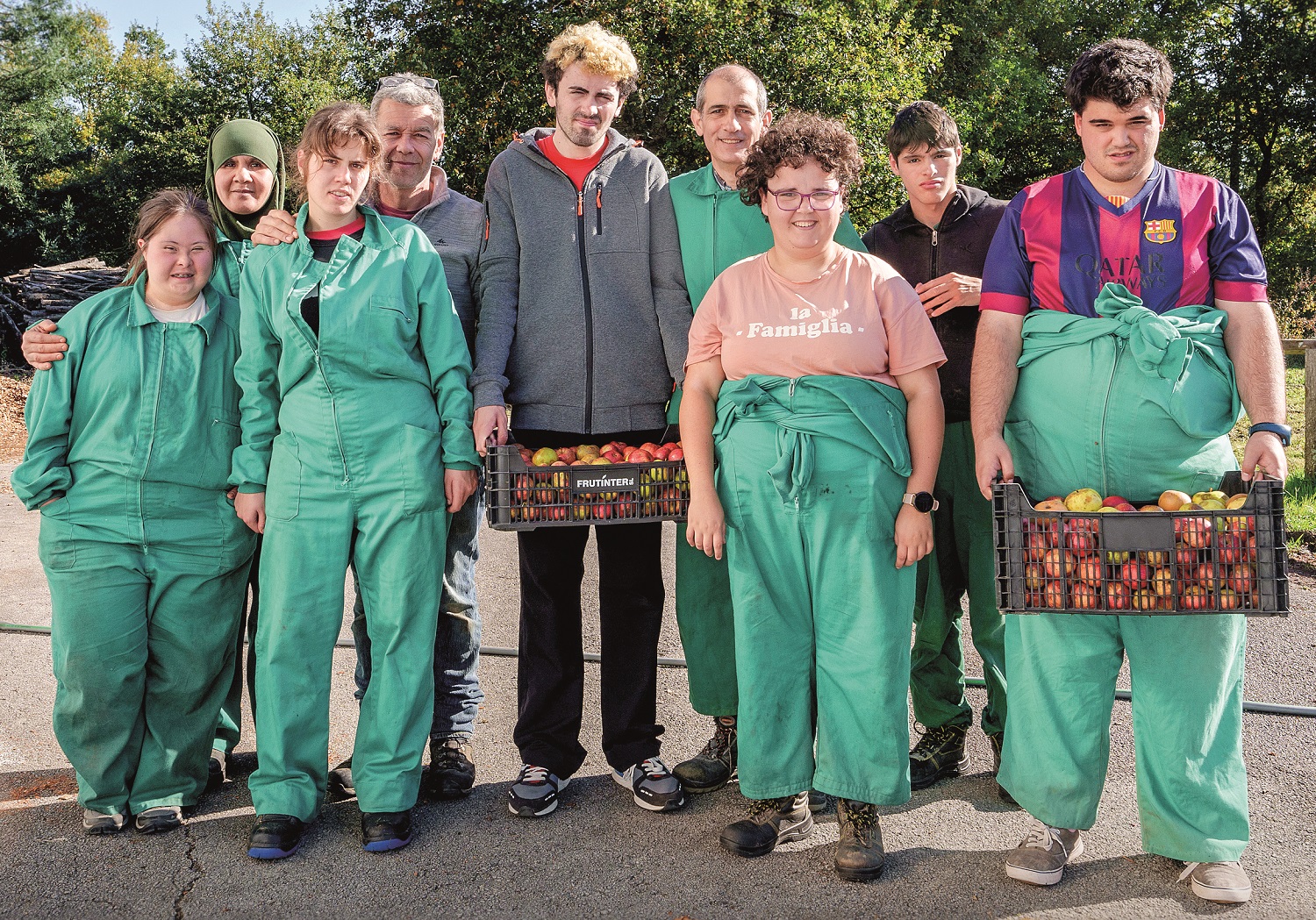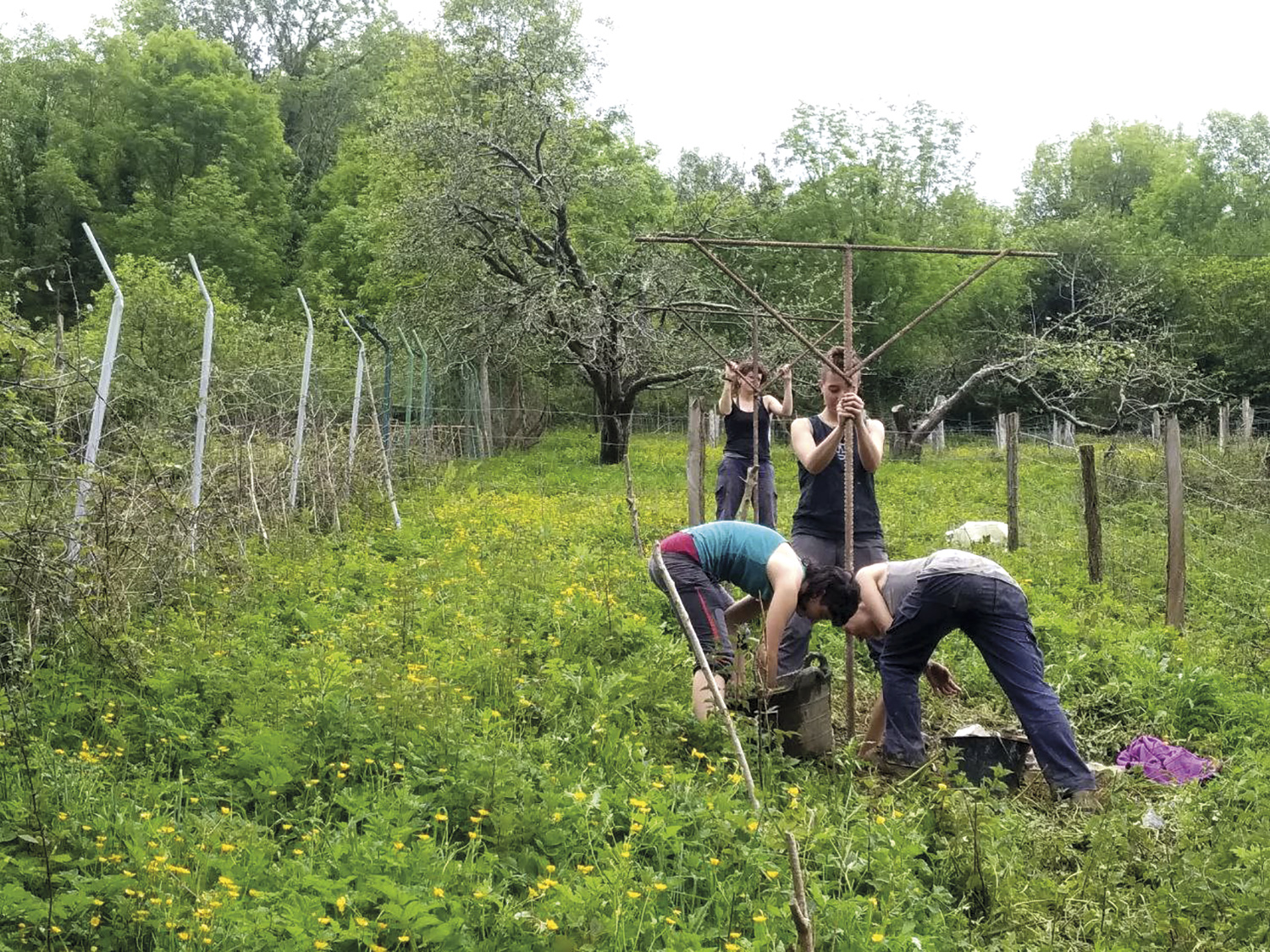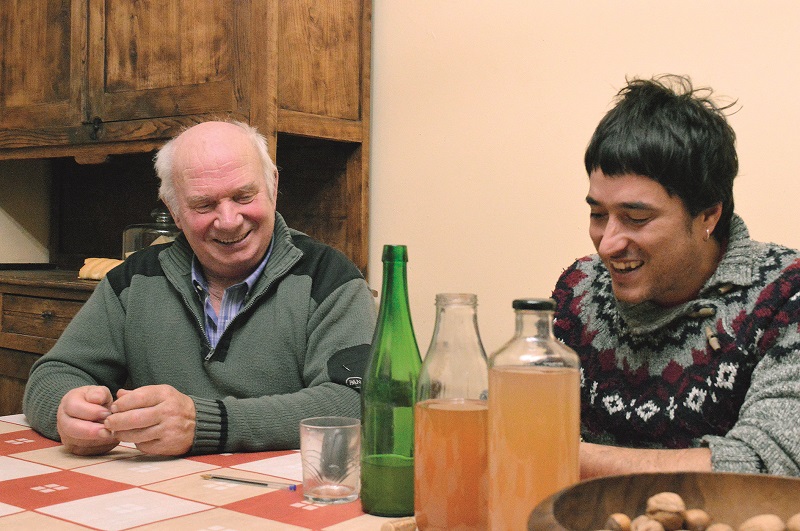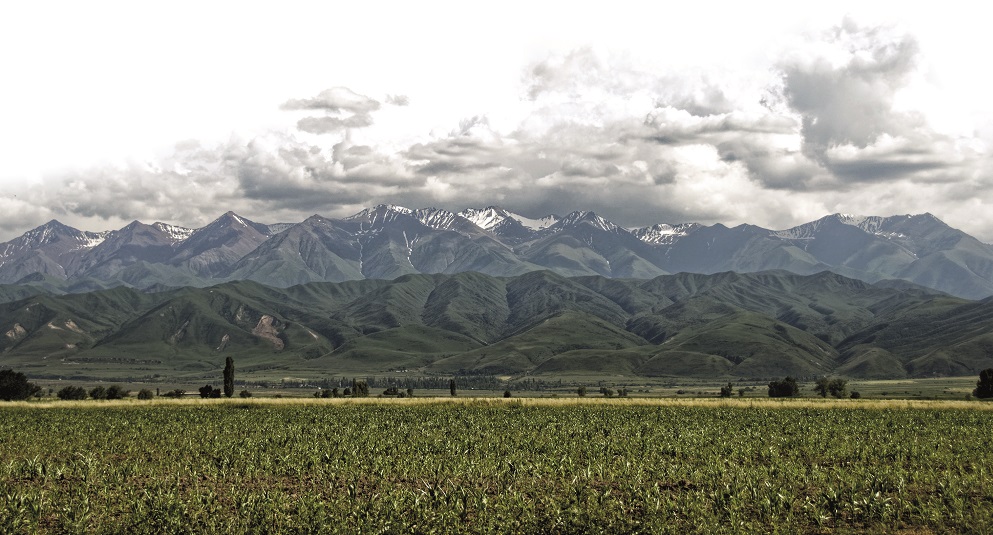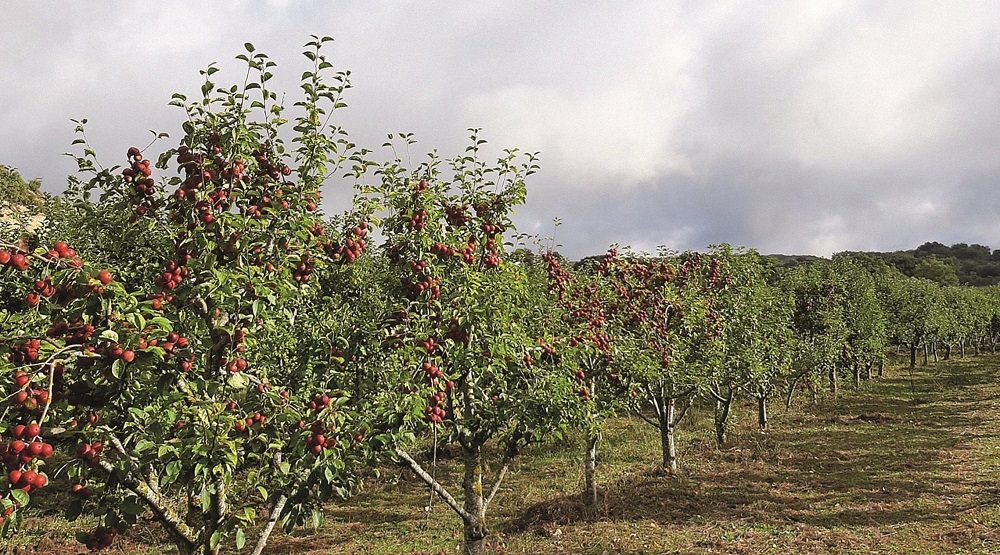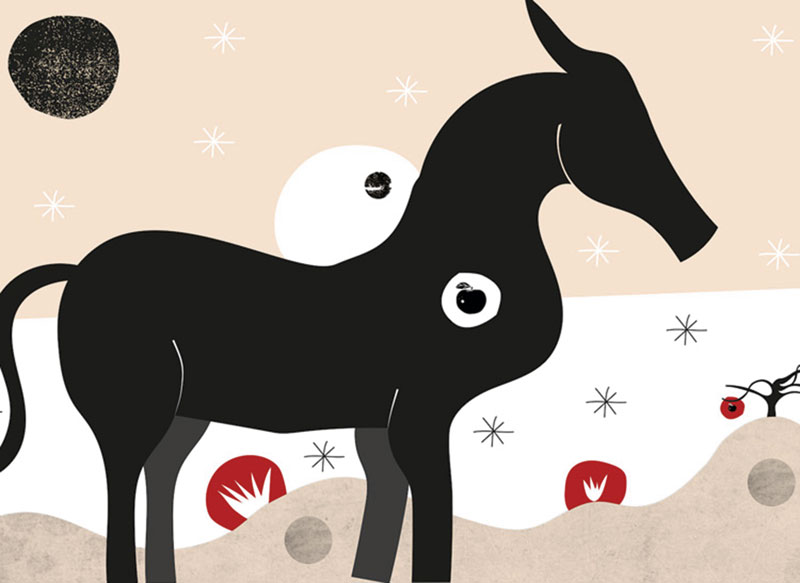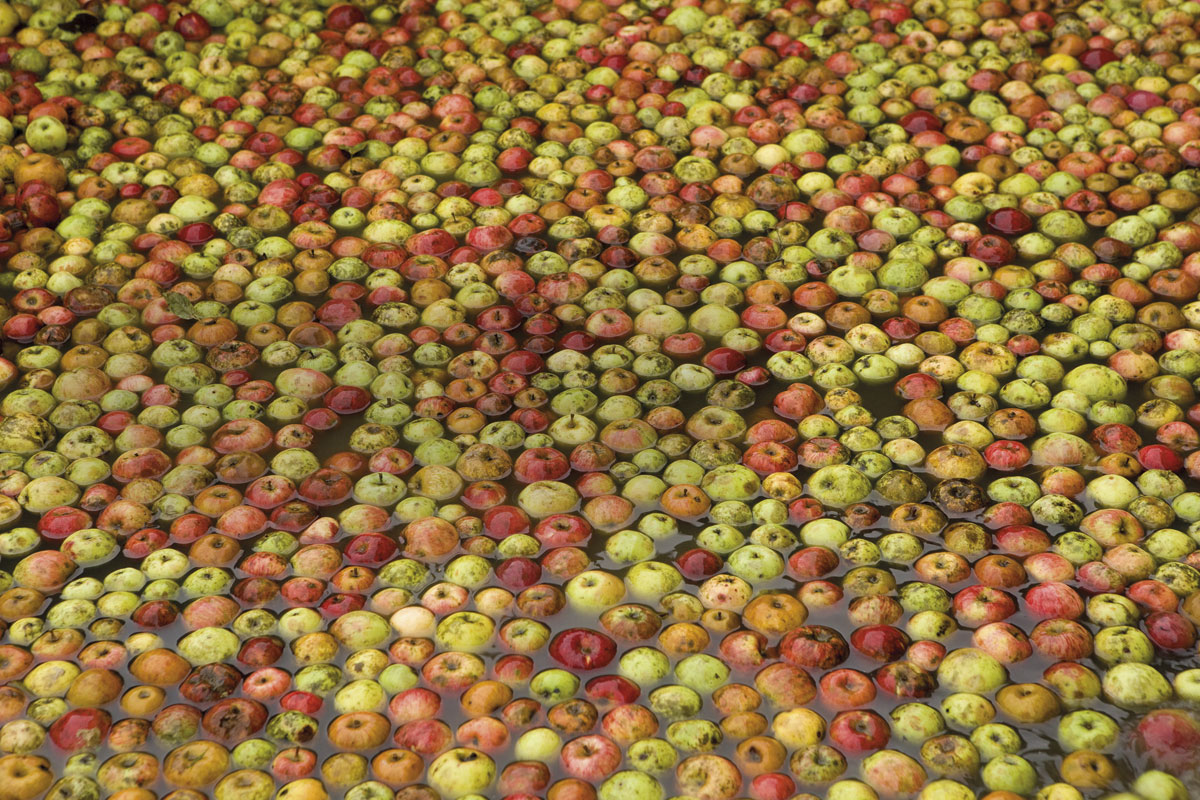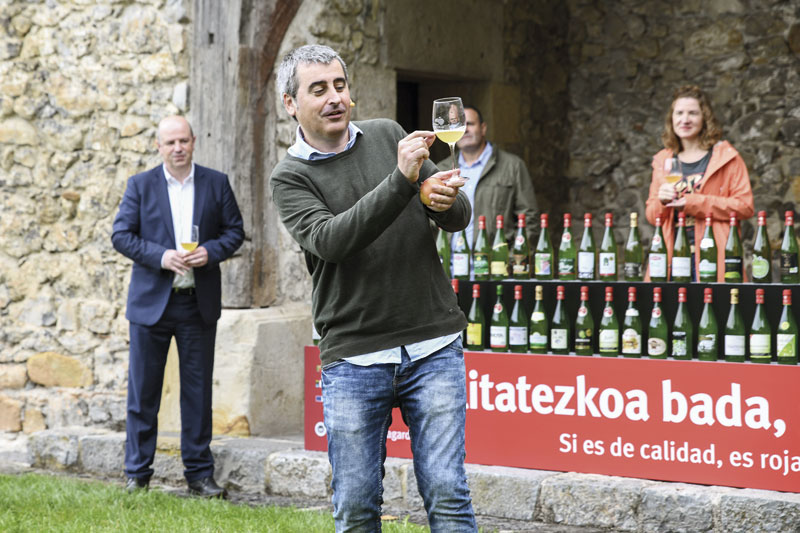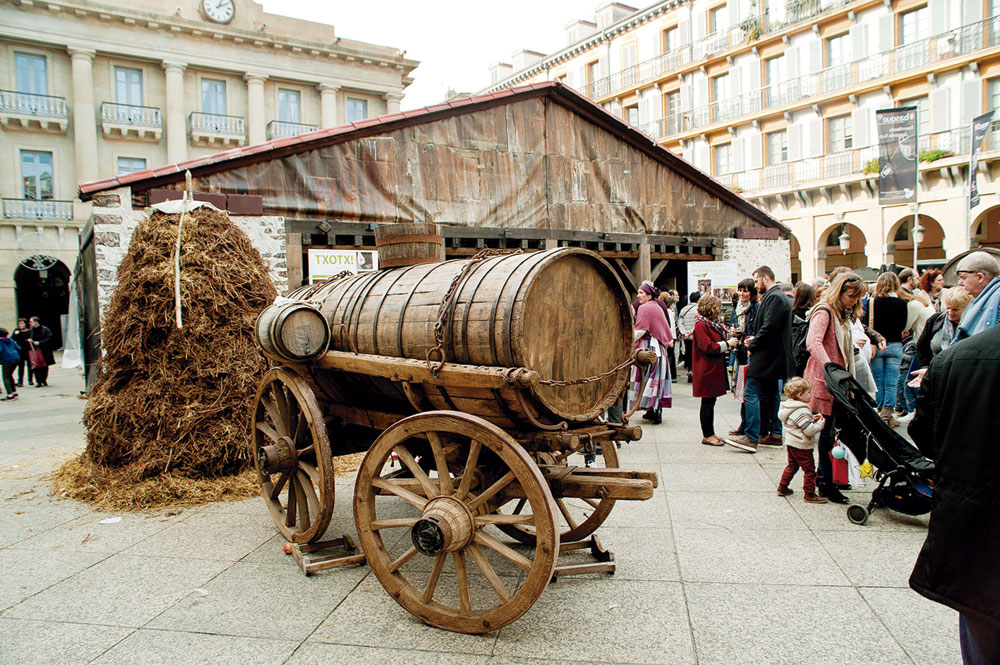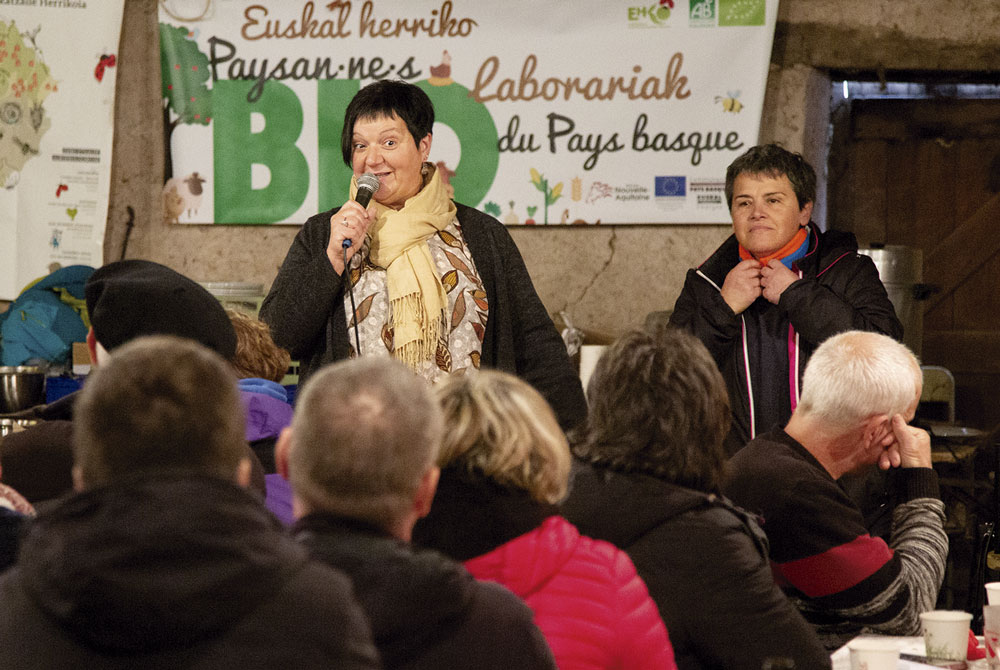Participatory and independent experience in Usurbil
- In Usurbil (Gipuzkoa), five young people aged around 30 started making cider eight years ago. Beñat Irazusta, Mikel Rosales, Josu Furundarena, Aitor Pagola and Joxe Mari Zubimendi, “the only one not an alley”, as Irazusta told us.
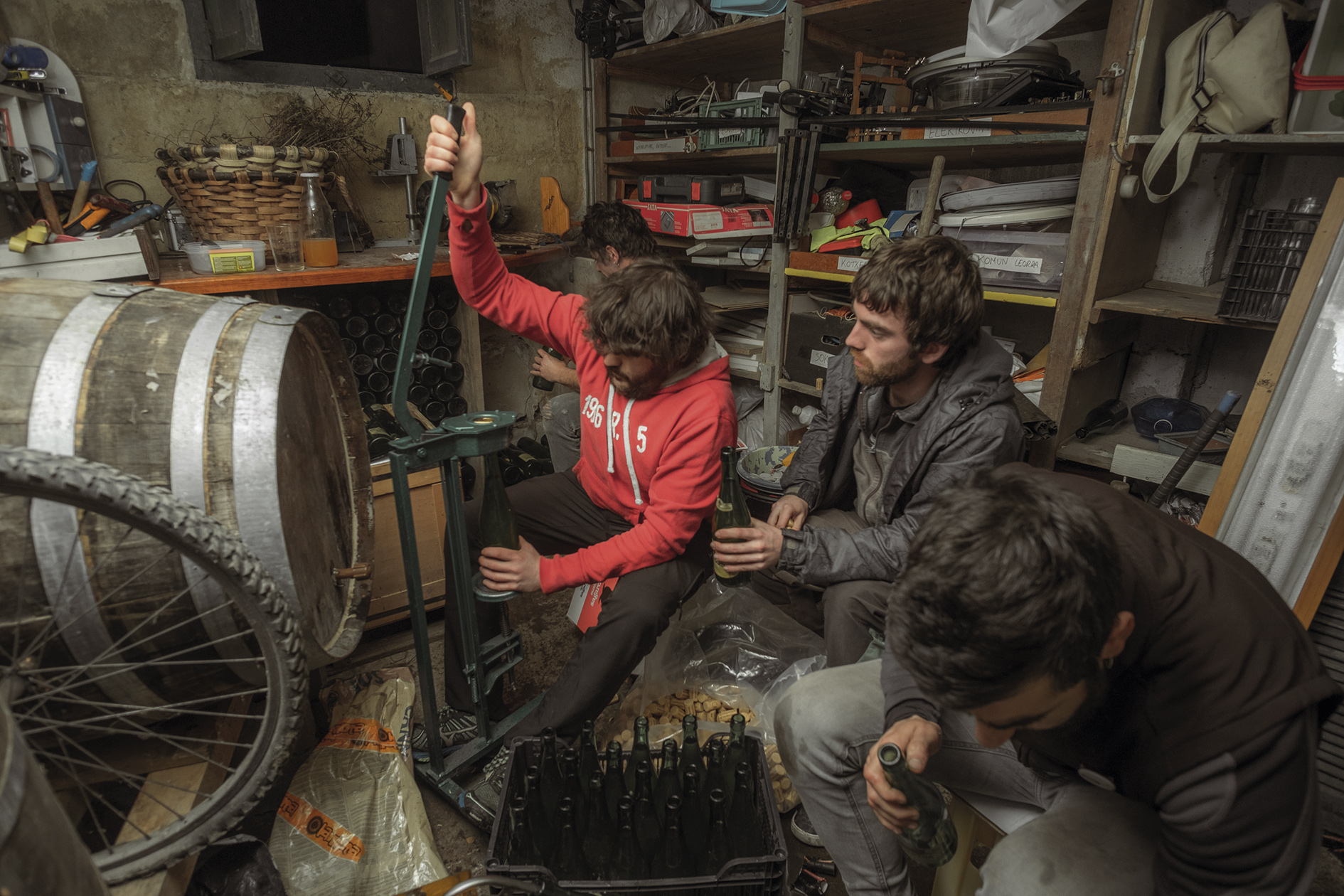
We have been quoted at Irazusta's house on a Monday night in mid-November. “We have a habit of meeting once a week to make a sandwich, tasting the cider we have in the barrels and making decisions.” The vats are at two points, not very large, five in the basement of the Usurbil house and others in Zubieta. Last year nearly 3,000 liters of cider were produced, “the largest quantity so far”. Apples are grouped from farmhouse to farmhouse; if you see someone has chamomile, you are asked if they don't need them and if the answer is negative, they take them for them. “From there and from here we get apples, we have contacts.” Trees have also been planted in Usurbil, but they have not yet begun to bear fruit.
They started in 2015, seeing that their older friends made cider, “we also have to do something,” they said. “We’re happy, we’re five people, more people helping us from time to time, when one goes wrong, others hold it, teamwork is important.” Adult people are “happy” to see that young people are cider. “We talk to each other, we listen to what they have to count, we do tests and we learn from mistakes… so we are.”
.jpg)
Because they don't have tolare at home, they take the apples to a sink to touch them. “A friend has tolare and has sometimes made us a favor, and the baserritarras cooperative Alkartasuna, of which Zubimendi is a member, also has a small tolare, but doing it in sidrerías is more effective.”
Cider tasting to make decisions
Before dinner we met in the basement of the house to taste cider from two oak and oak barrels. “Chestnut barrels are already in a position to bottle, they already have quite a few sparks.” When you start taking a sweet spot, they bottle the cider in order to “hold on to the maximum”. For this purpose they have gadgets, corks and bottle cleaning, plus a densimeter. “In our case, each year the time to bottle cider changes,” they tell us. “We don’t have tanks that keep the cider at all times at the right temperature. Depending on the time, bottled before or after. October this year has been warm, the boil has been fast.” The bottles have been obtained in a dispersed way, at the request of the associations. The Sagardo Eguna also collected a lot after talking to the organizers.
In the best year, they've made 3,000 liters, about 600 liters per five people, 800 bottles per head, for the home and for sharing between friends and family. “I have a hundred less left,” says Zubimendi. Are they so many? We asked him. “Don’t think we have the habit of eating and drinking.” In Usurbil, cider is made in many villages.
A bottle for dinner is labeled: Three Souls. Natural cider of the house. “It’s our brand. The name does not convince all the members of the group but... [laughter]." Why three souls? “They are the souls of the apple: sweet, salty and acid.”
Speaking of kupelas, they have explained that oak wood has less porosity and that having no holes keeps carbon dioxide better. The two oak barrels have been purchased from the winery Candido Besa de Rioja Alavesa, known in ARGIA as Esti Besa, which has committed to the promotion of winemaking and organic farming. “They were obliged to change the barrels, but because they were able to use them, we bought them at a low price.” The fifth cuba they have in Usurbil is more peculiar, vertical and cherry wood. “We bought a farmer from Oikia [Zumaia neighborhood] after bartering majo,” they tell us laughter. “The situation was very bad, with mouse droppings, but the housewife got tough, we didn’t persuade her immediately!” The wood had the scent of cherry nailed to the interior and acquired a reddish color. Well, there came a cider of special flavor and color: “In the first blow, some did not like it, but then, drinking very smoothly, we realized that it left a good taste, something like artisan beers.”
In the Zubieta district, there are three wooden barrels and two stainless. “Stainless steel is very neutral,” they say. “They can be better controlled, they are easier to clean... In wood, good or worse, cider will always be different, more special. On other occasions, even a year of inactivity is the same.” Each year they make the cider differently, “we always make some change in the process, it is a madness of Christ”.
The apple has three souls
A bottle for dinner is labeled: Three Souls. Natural cider of the house. “It’s our brand. The name does not convince all the members of the group but... [laughter]." Why three souls? “They are the souls of the apple: sweet, salty and acid.” The bottle label also contains the names of some barrels (Gerezi, Oilasko, Zulo handi, Bukoia...) and the phrase: “You have received and touched apple cider in Usurbil, with a participatory and independent experience.”
.jpg)
They get the apple manually, like most. They do not use Quiji, as the apple is pierced and you can pass the bad that a grain can have to the side, as the stick is not cleaned constantly. “We only take fallen apples to the ground because they have an adequate degree of maturity.” They speak of apple, among other things, that in our country there are not enough apples to satisfy the demand, that they have the feeling that in Asturias self-consumption is better filled and that the number of fruit trees in Girona, for example, stands out.
A round tolare
“Farmers generally work many hours to earn little money,” they tell us. “And what time do you have?” “Us the schedule? We start and end,” they answer us laughing. “And often you have to leave it before you finish, in boats. About 3 weekends a year, plus a few days loose. Some people think we do too much, but well, others want to buy a round tolare. We’ve been buying machinery, but tolare is something else.”
Asking what is the most important part of the process, they consider “cleaning” to be fundamental. “So that in fermentation, for example, no bacteria enter that influence the smell and taste... We clean the barrels very well and also the apples, we remove the soil, the leaves... That’s right, if they’re not too thin we take them all.” They also consider it important to monitor deadlines, to be clear about what needs to be done at all times. In a kitchen bookcase, we see a book about the moon. “I guess you will be served.” “Well, also ask!” And, as could not be otherwise, we have also been told to use the right type of apple, because of the risks involved in excessively sweet. “But since we don’t have apples, we have to take what is there.”









